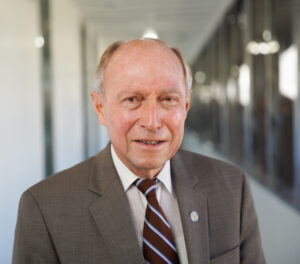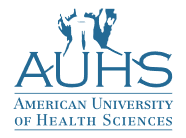
Vascular endothelial injury: Common element in the cellular & molecular pathogenesis of GI ulceration & COVID-19
Sandor Szabo
School of Medicine, American University of Health Sciences, Signal Hill/Long Beach, CA USA
The initial tissue injury induced by chemicals & microbes (e.g., bacteria, viruses) is often investigated only in epithelial cells, since no functional & morphologic methods were available to look for damage in vascular endothelial cells. In the rapidly progressing investigations during the initial stages of “gastric cryoprotection” research in the 1980s, our laboratory was the first to use Evan’s blue extravasation & monastral blue labeling of damaged endothelial cells in gastric subepithelial capillaries, arterioles & venules. We demonstrated increased vascular permeability & morphologic damage in vascular endothelial cells occurring before the appearance of gastric hemorrhagic erosions that could be prevented by pretreatment with small doses of prostaglandins or antioxidant sulfhydryls (Szabo et al., Science, 1981; Gastroenterology, 1985; Pihan et al., Gastroenterology, 1986; Trier et al., Gastroenterology. 1987).
Based on these initial & our subsequent studies on the role of VEGF/VPF (Vascular Endothelial Growth Factor, which was first called Vascular Permeability Factor, since it increases vascular permeability) in the pathogenesis & healing of gastroduodenal ulcers & ulcerative colitis (UC), we predicted (figures on left) that VEGF/VPF may play a role in the development of pulmonary edema in severe COVID-19 patients. Indeed, subsequent, independent clinical studies found elevated levels of VEGF/VPF in the blood of these patients & administration of neutralizing anti-VEGF improved clinical conditions. New results demonstrated that endothelial cells also have ACE-2 receptors that bind the spike proteins of SARS-CoV-2 that initiate the cascade of ‘cytokine storm’ which causes extensive damage to vascular endothelium not only in the lungs, but also in the brain & myocardium, often leading to microinfarcts & stroke (figures on right, modified from Science, 2020). Conclusion: Our initial experiments in animal models of GI ulceration & new clinical studies demonstrate a critical role of early vascular injury not only in the pathogenesis of gastroduodenal ulcers & UC, but also in the development of multiorgan lesions in COVID-19.
[AUHS Editor’s Note: We marvel at, and are appreciative of, the research that enables physicians to treat diseases such as COVID-19. At AUHS we seek to follow the model of “preach and heal” as modeled for us by Jesus: “And Jesus went about all the cities and villages, teaching in their synagogues, and preaching the gospel of the kingdom, and healing every sickness and every disease among the people” (Matthew 9: 35). As Dr. Charles Fielding, the author of the book Preach and Heal, wrote: “Health strategies are for every disciple regardless of background. By ministering with loving hands to individuals and imparting the Gospel, the potential to transform entire communities ensues.” We may not all be researchers like Dr. Szabo, but we can all preach and heal with the goal of transforming our community.]References
Pihan, G., Majzoubi, D., Haudenschild, C., Trier, J. S., & Szabo, S. (1986). Early microcirculatory stasis in acute gastric mucosal injury in the rat and prevention by 16,16-dimethyl prostaglandin E2 or sodium thiosulfate. Gastroenterology, 91(6), 1415-1426. https://doi.org/10.1016/0016-5085(86)90195-2
Szabo, S., Trier, J. S., Brown, A., & Schnoor, J. (1985). Early vascular injury and increased vascular permeability in gastric mucosal injury caused by ethanol in the rat. Gastroenterology, 88(1 Pt 2), 228-36. https://doi.org/10.1016/s0016-5085(85)80176-1
Szabo, S., Trier, J. S. & Frankel, P. W. (1981) Sulfhydryl compounds may mediate gastric cytoprotection. Science, 214(4517), 200-202. https://doi.org/10.1126/science.7280691
Trier, J. S., Szabo, S., & Allan, C. H. (1987). Ethanol-induced damage to mucosal capillaries of rat stomach ultrastructural features and effects of prostaglandin F2β and cysteamine. Gastroenterology, 92(1):13-22. https://doi.org/10.1016/0016-5085(87)90834-1

